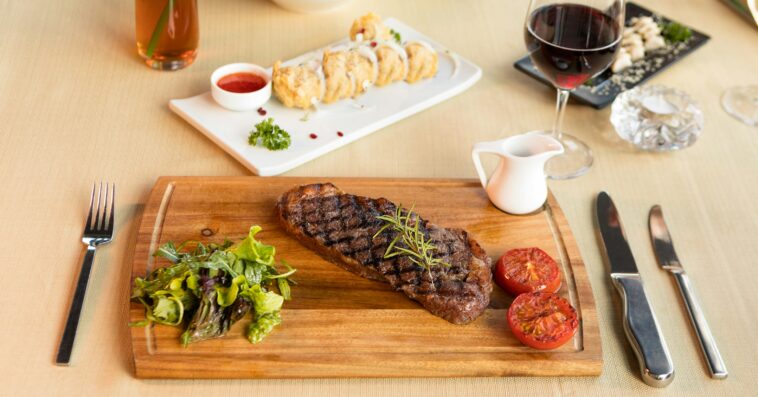Introduction:
Nestled along the sun-kissed shores of the Mediterranean, Spain boasts a culinary heritage as rich and diverse as its vibrant culture. At the heart of this gastronomic tapestry lies paella – a dish that embodies the essence of Spanish cuisine. Join us on a sensory journey as we explore the origins, ingredients, and cultural significance of paella, unraveling the threads that weave together this culinary masterpiece.
Origins and Evolution:
The story of paella begins in the fertile fields of Valencia, where rice cultivation thrived under the Moorish influence during the Middle Ages. Originally a peasant dish, paella was a humble union of rice, local vegetables, and whatever protein could be sourced – often rabbit, chicken, or duck. As trade flourished and Valencia became a melting pot of cultures, new ingredients such as saffron, paprika, and seafood found their way into the paella pan, enriching its flavors and expanding its repertoire.
Ingredients and Flavor Profile:
At the heart of paella lies the holy trinity of Spanish cuisine – rice, saffron, and olive oil. The rice, typically of the short-grain variety, serves as the canvas upon which the flavors of the dish unfold. Saffron, with its golden hue and delicate aroma, imparts a subtle yet unmistakable essence to the dish, while olive oil provides a foundation of richness and depth.

The choice of protein varies depending on regional preferences and seasonal availability. Seafood paella, popular along the coastal regions, showcases an abundance of fresh shrimp, clams, and mussels, while the meat-centric versions of inland Spain feature succulent cuts of rabbit, chicken, or pork. Regardless of the variation, paella is a celebration of the bountiful ingredients that grace the Spanish countryside and coastline.
Cooking Techniques and Traditions:
The art of preparing paella is as much about technique as it is about ingredients. Traditionally cooked over an open flame in a wide, shallow pan known as a “paellera,” the dish demands patience, skill, and a keen eye for detail. The rice is carefully sautéed with aromatic sofrito, a mixture of onions, garlic, and tomatoes, before being bathed in a fragrant broth and left to simmer to perfection.
One of the most coveted aspects of paella is the socarrat – a caramelized layer of rice that forms at the bottom of the pan, imbuing the dish with a depth of flavor and textural contrast. Spaniards regard the socarrat as the ultimate sign of a well-executed paella, eliciting smiles of satisfaction from those lucky enough to savor it.
Cultural Significance and Global Appeal:
Beyond its culinary prowess, paella holds a special place in the hearts of the Spanish people, serving as a symbol of community, hospitality, and shared heritage. Whether prepared for a festive occasion or enjoyed as a casual Sunday lunch with family and friends, paella brings people together, fostering bonds that transcend generations.
In recent years, paella has transcended its Spanish roots to become a global culinary sensation, beloved by food enthusiasts around the world. From upscale restaurants in cosmopolitan cities to humble kitchens in far-flung corners of the globe, paella has left an indelible mark on the international culinary landscape, captivating palates and igniting a passion for Spanish cuisine.
Conclusion:
In a world filled with fleeting food trends and passing fads, paella stands as a timeless testament to the enduring allure of Spanish gastronomy. With its rich history, diverse flavors, and cultural significance, paella represents more than just a dish – it is a celebration of life, love, and the simple pleasures that bring us together at the table. So, whether you find yourself on the shores of Valencia or in the heart of a bustling metropolis, take a moment to savor the magic of paella and experience the soul of Spain in every delicious bite.

